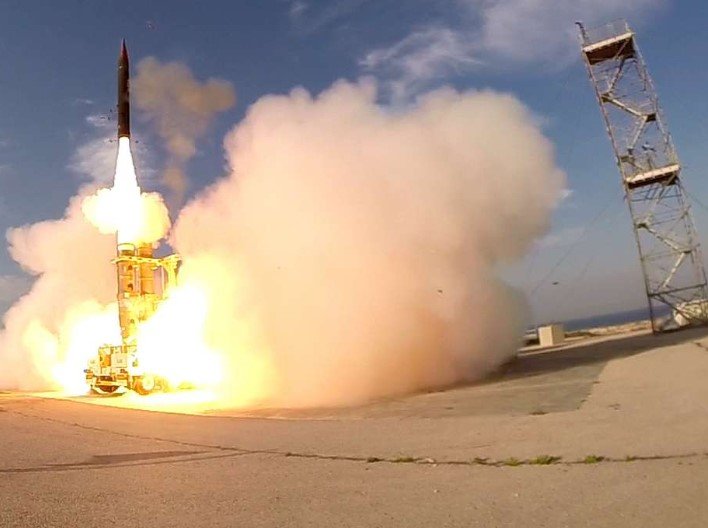The skies over Israel lit up Tuesday night as three missiles—one from Yemen and two from Gaza—were shot down by Israeli air defenses, sparking tension across a region already running on nerves.
Ben Gurion Airport. Jerusalem. Modiin. Rishon Lezion. The Gaza envelope. One by one, cities and settlements flared with air raid sirens. It was a night where dinner tables were left cold and children were hurried into stairwells and shelters.
This time, no one was hurt. But everyone felt it.
A Familiar Sound, A Fresh Reminder
For Israelis, the shriek of a siren is no longer unfamiliar—it’s unsettlingly routine. But Tuesday evening’s warning, covering central and southern Israel, had an edge to it.
The Israeli Defense Forces (IDF) confirmed that a ballistic missile fired from Houthi-controlled Yemen was intercepted by the Arrow defense system. Within minutes, the Iron Dome took down two short-range rockets fired from southern Gaza.
No injuries. No buildings hit. Yet, the emotional toll added another layer to a nation fraying at the edges.
One resident in Jerusalem’s Gilo neighborhood said she grabbed her 6-year-old son and ran barefoot into the stairwell. “It sounded like it was right above us,” she whispered, still shaking.

Houthis Claim Credit, Netanyahu’s Cabinet Hits Back
Iranian-backed Houthi militants were quick to boast. Their target? Israel’s main international hub—Ben Gurion Airport.
Their intent? Psychological disruption, as always.
Foreign Minister Israel Katz didn’t mince words: “If the Houthis continue, Yemen will be treated like Tehran.” His words carried the weight of a government that’s juggled Lebanon in the north, Gaza in the south, and now, the expanding threat from across the Red Sea.
But it was U.S. Ambassador to Israel, David Friedman, who stirred global attention with his no-filter reaction on X (formerly Twitter):
“Maybe those B2 bombers need to visit Yemen!”
That line echoed around Washington’s defense circles like a dropped glass in a quiet room.
Missile Launch Locations and Interceptions
Israel’s missile defense network has grown increasingly layered since the Hamas attack on October 7, 2023, but it’s being tested now like never before.
Let’s break it down in a simple table:
| Missile Origin | Type of Missile | Target Claimed | Intercepted By | Casualties/Impact |
|---|---|---|---|---|
| Yemen (Houthis) | Ballistic Missile | Ben Gurion Airport (claimed) | Arrow System | None |
| Gaza (Hamas?) | 2 Short-Range Rockets | Southern Israel | Iron Dome | None |
Both Gaza rockets were launched within a short window of the Yemen strike, prompting analysts to speculate whether the two were coordinated, or merely opportunistic. Either way, it didn’t go unnoticed in the Knesset.
Rare Gaza Fire, But Regional Fuse Stays Lit
Gaza had been relatively quiet—relatively being the keyword. After nearly two years of full-scale fighting, Hamas has pulled back on rocket fire. But with hostage negotiations stalling and Iran flexing again, the calm has been anything but stable.
The IDF said the Gaza rockets didn’t appear to cause physical harm. But psychologically? It’s another scar.
And now, with the Houthis inserting themselves with longer-range weapons from more than 1,000 miles away, the battlefield map feels… off-kilter.
“There’s no front anymore,” said a former Israeli Air Force officer. “It’s all around.”
Civilians Duck, Planes Divert, Markets Watch
As the sirens screamed, Ben Gurion Airport briefly halted landings and redirected a few incoming flights. El Al resumed operations quickly, but the tremor rippled through aviation circles.
In fact, this is the second airspace disruption in under a month tied to missile threats, fueling jitters among international carriers still mulling their return after the June flare-up with Iran.
And in Tel Aviv’s financial district, the Tel Aviv 125 index closed flat Wednesday morning—investors now seemingly numb to the red alerts that once rattled markets.
Still, the shekel dipped slightly against the dollar.
Military Posturing or Prelude?
The big question now: was this a warning shot from the Houthis—or the beginning of a longer-range campaign against Israeli infrastructure?
Former Mossad officials think the former.
-
“The Houthis like spectacle. They want attention, not necessarily destruction,” said one retired analyst.
-
“But Tehran’s fingerprints are all over this. And they want leverage over ceasefire terms.”
With a proposed 60-day Gaza ceasefire floating in diplomatic circles—championed by U.S. President Donald Trump—any attack, successful or not, could spoil the deal. Or be a bargaining tactic. Or both.
The timing? It’s suspiciously aligned with renewed U.S. talks in the region and a planned Trump-Netanyahu meeting next week.
Regional Escalation: Red Sea to the Jordan Valley
In the wider picture, the Houthis’ reach from Yemen to Israel isn’t just a military feat—it’s a political message. And it’s scaring Egypt, Jordan, and even Saudi Arabia.
Israeli military officials are weighing options to deter further strikes.
And U.S. CENTCOM assets in the Gulf have been quietly put on heightened alert, according to two American defense sources. B2 bombers? Not off the table. Not yet deployed. But the chatter is real.
So what does that mean for ordinary Israelis?
One Tel Aviv resident summed it up best: “It means we don’t sleep. And we always keep one ear open.”
